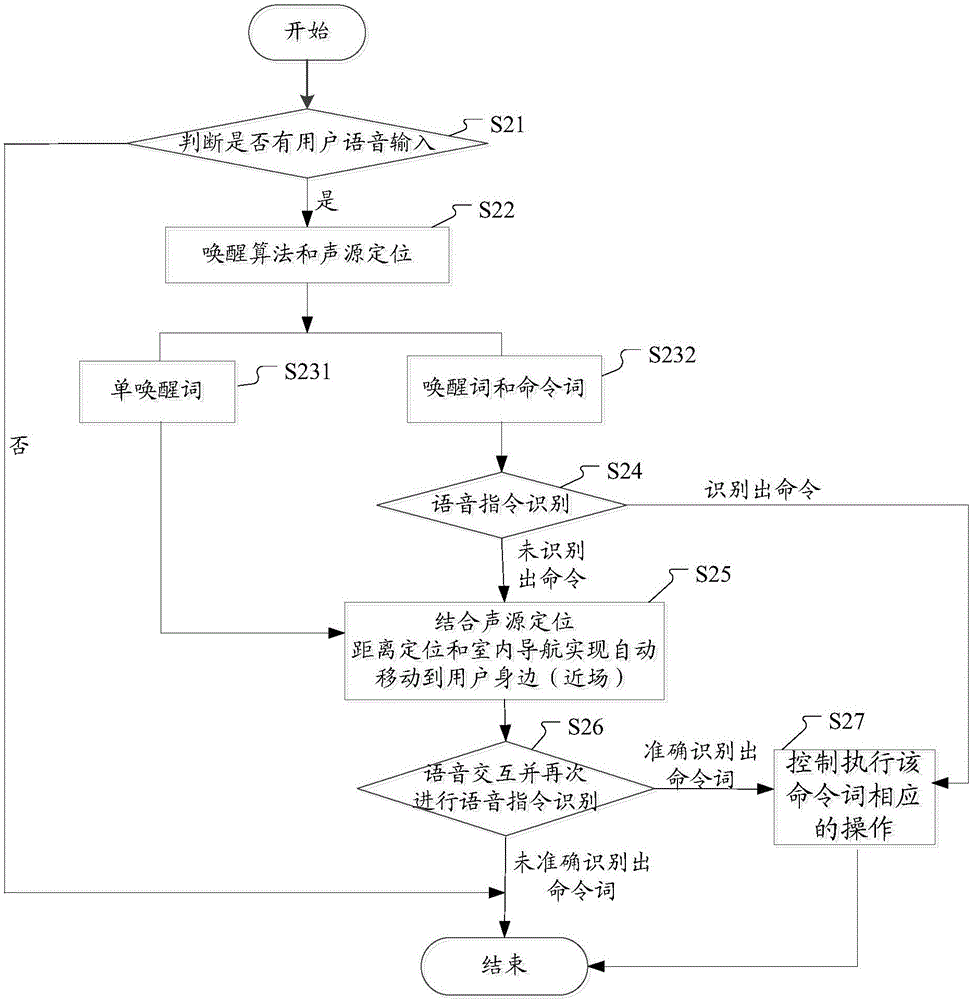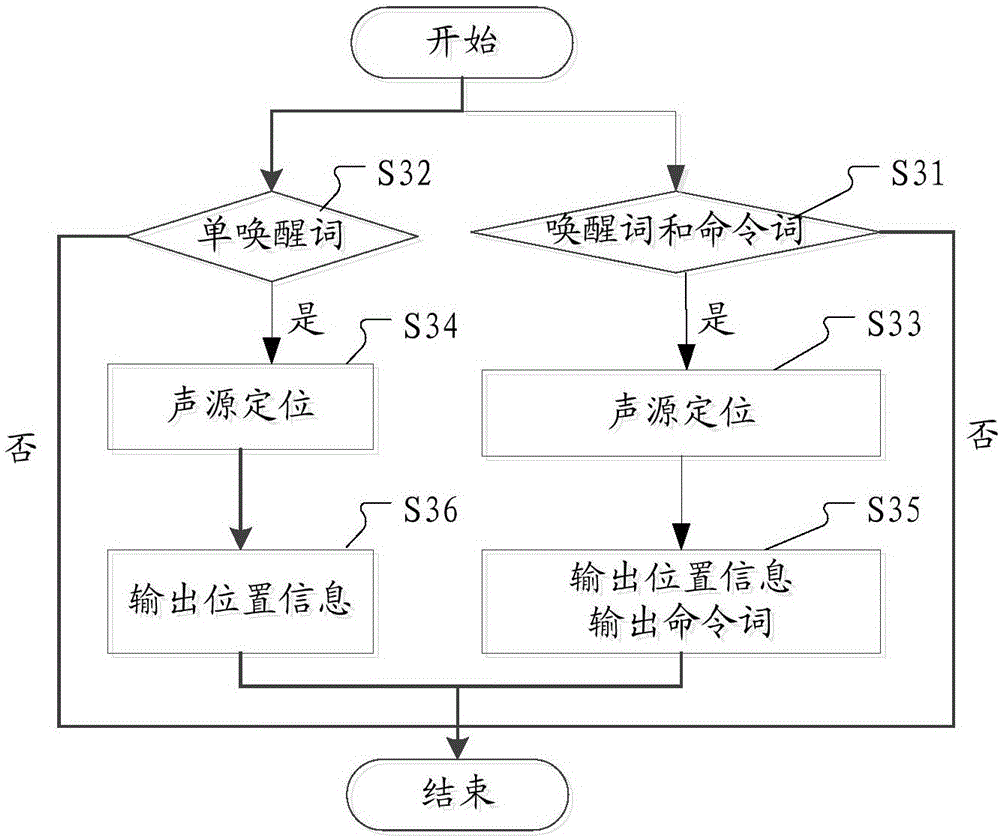Voice interaction control method and device for intelligent equipment
A technology of intelligent equipment and voice interaction, applied in two-dimensional position/channel control, voice analysis, voice recognition and other directions, can solve the problems of inability to effectively identify user voice signals, poor user experience, etc., to optimize user voice interaction experience, The effect of shortening the distance and improving the speech recognition rate
- Summary
- Abstract
- Description
- Claims
- Application Information
AI Technical Summary
Problems solved by technology
Method used
Image
Examples
Embodiment 1
[0052] figure 1 It is a schematic flowchart of a voice interaction control method for a smart device according to an embodiment of the present invention, see figure 1 , the voice interaction control method includes:
[0053] Step S11, monitor and collect the voice signal sent by the user of the smart device in real time;
[0054] Step S12, performing speech recognition on the collected speech signal;
[0055] Step S13, according to the voice recognition result of the smart device on the voice signal, wake up the corresponding function of the smart device and determine whether to control the smart device to move, if yes, obtain the user's position, control the smart device to move toward the user, and shorten the distance between the smart device and the user. The distance is to recognize the voice signal sent by the user again; otherwise, directly control the smart device to perform the corresponding operation according to the voice recognition result.
[0056] The correspo...
Embodiment 2
[0059] figure 2 It is a schematic flowchart of a voice interaction control method for a smart device according to an embodiment of the present invention. The following combination figure 2 The implementation steps and principles of the voice interaction control method according to the embodiment of the present invention are described in detail. see figure 2 , the method of this embodiment includes the following steps S21 to S27.
[0060] process starts;
[0061] In step S21, it is judged whether there is a user's voice input; if yes, step S22 is performed, otherwise, the process can be ended.
[0062] Step S22, executing the wake-up algorithm and sound source localization;
[0063] After collecting the voice signal from the user, the voice signal processing function inside the intelligent robot executes the wake-up algorithm and sound source localization according to the voice signal.
[0064] image 3 It is a schematic diagram of the principle of speech recognition a...
Embodiment 3
[0099] In this embodiment, a specific application scenario of the voice interaction control method of the smart device according to the embodiment of the present invention is listed.
[0100] In this embodiment, the smart device is specifically a service robot, and the server robot can execute the voice interaction control method of the smart device according to the embodiment of the present invention.
[0101] The robot and 3-year-old Xiao Ming are both in the living room. Xiao Ming wakes up the robot by voice. If the robot is not awakened, it does not respond.
[0102] The initial distance between Xiao Ming and the robot is within 2 meters. Xiao Ming said to the robot: "Harry, I want to hear the story." If he didn't hear it clearly, the robot asked: "I didn't hear it clearly, please say it again."
[0103] At the same time, the robot calculates the sound from which direction according to the sound signal sent by Xiao Ming, the face turns to this direction to respond, and mov...
PUM
 Login to View More
Login to View More Abstract
Description
Claims
Application Information
 Login to View More
Login to View More - R&D
- Intellectual Property
- Life Sciences
- Materials
- Tech Scout
- Unparalleled Data Quality
- Higher Quality Content
- 60% Fewer Hallucinations
Browse by: Latest US Patents, China's latest patents, Technical Efficacy Thesaurus, Application Domain, Technology Topic, Popular Technical Reports.
© 2025 PatSnap. All rights reserved.Legal|Privacy policy|Modern Slavery Act Transparency Statement|Sitemap|About US| Contact US: help@patsnap.com



